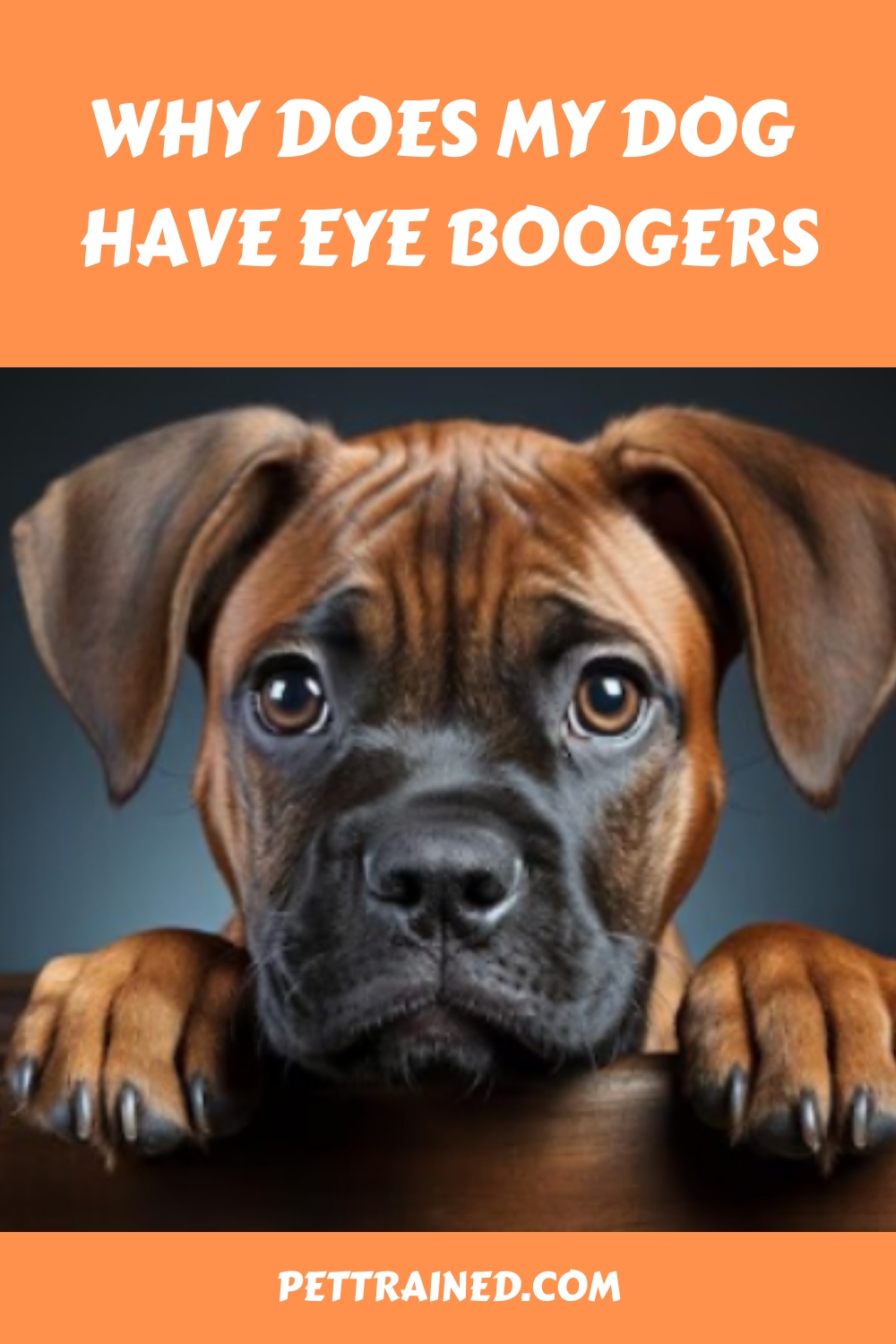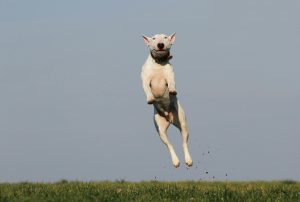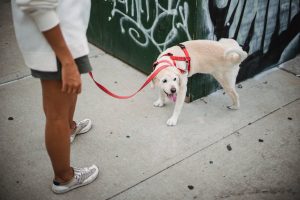
The unwanted morning gift from your furry friend: a sticky, crusty eye booger staring back at you. It’s as if their eyes are trying to tell you something, but what? You wonder if it’s just a normal part of their tear production, or if there’s an underlying issue brewing. Perhaps it’s the environment, or their breed, or something more serious like an infection or disease. You take a closer look, and their big, round eyes seem to be pleading for answers. The question is, will you be able to uncover the reason behind those pesky eye boogers?
Table of Contents
Normal Tear Production in Dogs
How do dogs normally produce tears, and what role does this process play in maintaining their eye health? You may wonder.
Dogs produce tears through their tear ducts, which are located in the inner corner of their eyes. These ducts secrete a watery substance that helps to keep their eyes moist and free of debris.
As a dog owner, you’re likely familiar with tear staining – those pesky brown streaks that appear under your dog’s eyes. Tear staining is a natural result of tear production and is usually not a cause for concern.
The stains occur when the tears, which contain a pigment called porphyrin, react with oxygen in the air.
This post contains affiliate links. However all the information provided on this site are my own honest opinions. See more in Disclaimer.
In healthy dogs, tear staining is usually minimal and can be easily cleaned away with a damp cloth.
In addition to tear staining, normal tear production plays an essential role in maintaining your dog’s eye health. Tears help to lubricate the eyes, wash away dirt and debris, and provide antibacterial properties that protect against infection.
If you have concerns about your dog’s tear production or eye health, it’s always best to consult with a veterinarian.
Allergies and Environmental Irritants

While normal tear production helps maintain your dog’s eye health, allergies and environmental irritants can spark excessive tear production, leading to a sticky, gooey discharge that’s often referred to as dog eye boogers.
Your dog’s eyes can react to various substances, including pollen, dust, mold, and pet dander, which can exacerbate seasonal allergies.
Environmental pollutants like smoke, chemicals, and pesticides can also cause irritation, leading to excessive tear production.
When your dog is exposed to these substances, their immune system responds by releasing histamine, a chemical that can cause blood vessels to dilate, leading to increased tear production.
You may notice that your dog’s eye boogers are more prevalent during peak pollen seasons or after exposure to environmental pollutants.
Here are three common signs that your dog’s eye boogers are caused by allergies or environmental irritants:
- Seasonal patterns: If your dog’s eye boogers worsen during peak pollen seasons, it could be a sign of seasonal allergies.
- Environmental triggers: If your dog’s eye boogers appear after exposure to smoke, chemicals, or pesticides, it could indicate an environmental irritant.
- Accompanying symptoms: If your dog exhibits other allergy symptoms like itching, sneezing, or skin irritation, it may be related to their eye boogers.
Eye Infections and Diseases
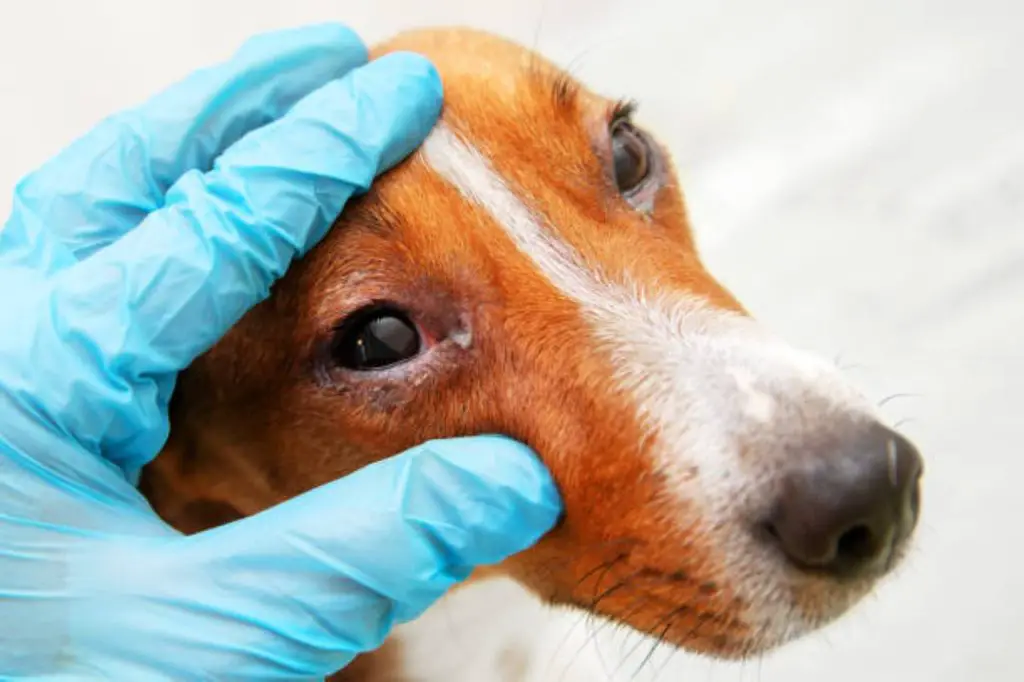
In addition to allergies and environmental irritants, eye infections and diseases can also cause excessive tear production and discharge in your dog, often leading to a more serious and potentially sight-threatening condition.
As a dog owner, it’s vital to be aware of the common eye infections and diseases that can affect your furry friend. Conjunctivitis, also known as ‘pink eye,’ is a highly contagious condition that can cause redness, swelling, and discharge in the eyes.
If left untreated, conjunctivitis symptoms can progress to more severe complications, such as corneal ulcers. Corneal ulcers are painful, open sores that can develop on the surface of the cornea, leading to vision loss and even blindness.
If you suspect that your dog has an eye infection or disease, it’s important to seek veterinary attention immediately.
Your veterinarian will perform a thorough examination, including a complete medical history and diagnostic tests, to determine the underlying cause of the eye boogers.
Based on the diagnosis, your veterinarian will develop a treatment plan to manage the condition, which may include antibiotics, anti-inflammatory medications, or other therapies.
Prompt treatment is vital to prevent long-term damage to your dog’s vision and overall health.
Dust and Debris Accumulation
Dust and debris accumulation in your dog’s eyes can trigger a natural defense mechanism, causing the eyes to produce excess tears and mucous to flush out the irritants.

As a dog owner, you’re likely familiar with the unsightly goo that can form in the corners of your dog’s eyes. This discharge is often a sign that your dog’s eyes are fighting off dust particles and debris buildup.
When dust and debris enter your dog’s eyes, they can cause irritation and inflammation. To combat this, the eyes produce more tears and mucous to trap and remove the foreign particles.
This process can lead to the formation of eye boogers, which are fundamentally dried-up bits of mucous and debris.
Here are three common ways dust and debris can accumulate in your dog’s eyes:
- Wind and weather: Windy or dusty conditions can stir up particles that can enter your dog’s eyes.
- Playtime and exercise: When your dog is running around or playing, they can stir up dust and debris that can get into their eyes.
- Environmental factors: Dry air, pollen, and other environmental factors can contribute to dust and debris accumulation in your dog’s eyes.
Breed-Specific Eye Traits
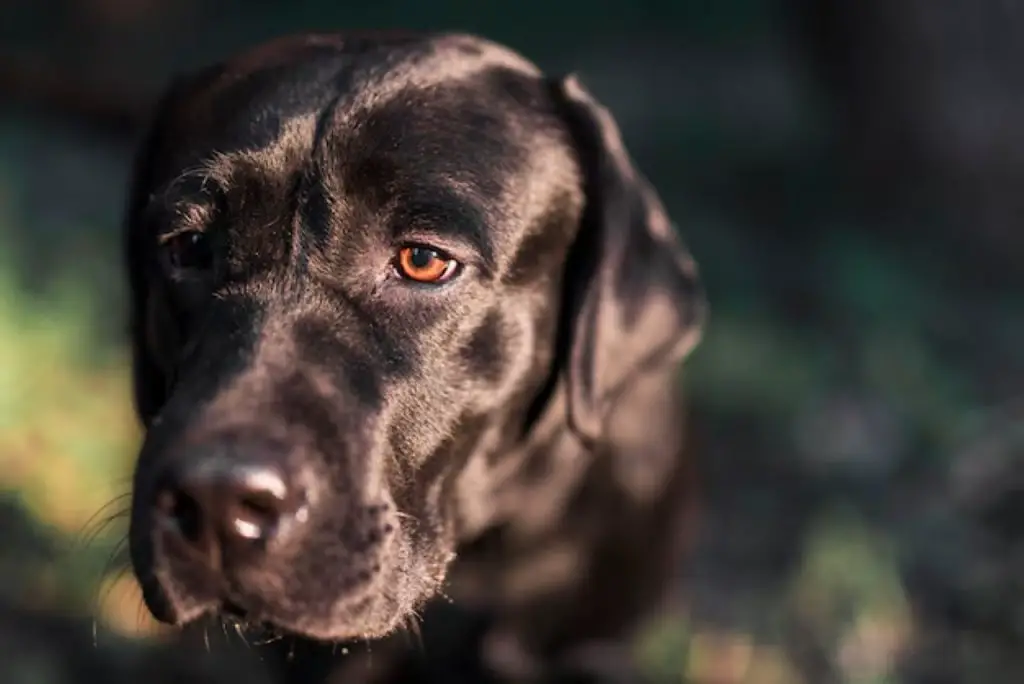
As you evaluate your dog’s eye health, you’ll want to take into account breed-specific traits that may impact their susceptibility to eye boogers.
Certain breeds have distinct eye shapes and sizes that can affect tear flow and debris accumulation, while others have floppy ears that may direct dirt and particles towards the eyes.
Additionally, some breeds are prone to eyelid abnormalities, which can increase the risk of eye irritation and infection.
Eye Shape and Size
The shape and size of your dog’s eyes are determined by its breed, with certain breeds inheriting specific eye traits that affect their propensity for tear production and, consequently, eye booger accumulation.
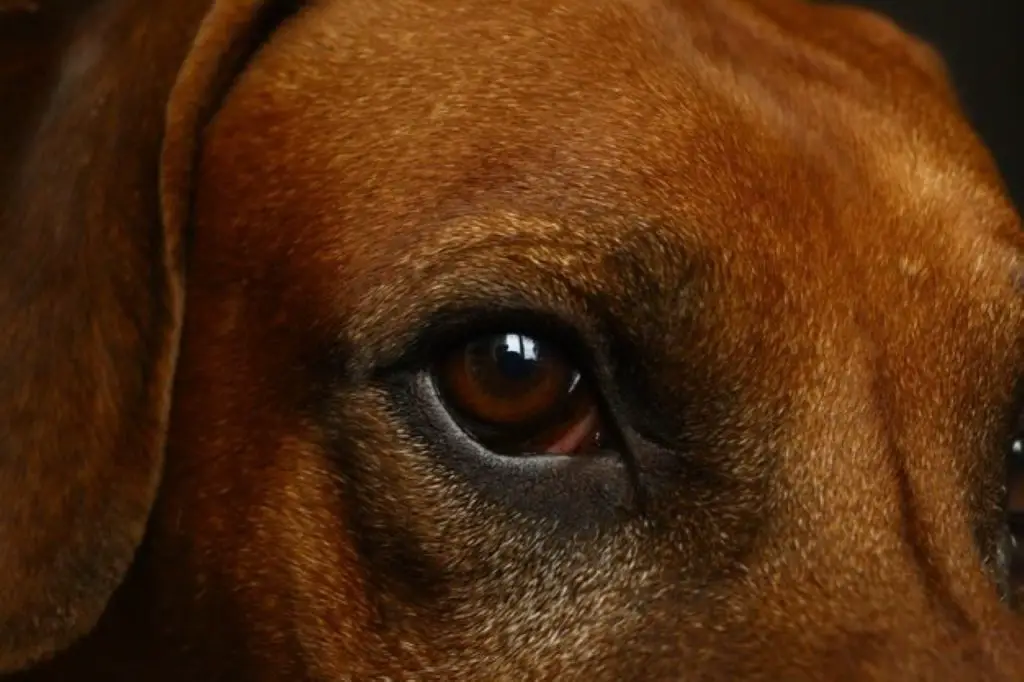
As a dog owner, it’s crucial to grasp how your dog’s eye anatomy influences its eye function and, ultimately, its eye booger formation.
For instance, breeds with larger eyes, such as Pugs and Bulldogs, are more prone to tear production and eye booger accumulation due to their eye shape and size.
Here are three key factors to evaluate:
- Eye shape: Breeds with shallow eye sockets, like Pugs and Shih Tzus, are more likely to experience tear overflow and eye booger accumulation.
- Eye size: Larger eyes, such as those found in Bulldogs and Boston Terriers, produce more tears, increasing the likelihood of eye booger formation.
- Eyelid structure: Breeds with loose or droopy eyelids, like Cocker Spaniels and Basset Hounds, can experience increased tear production and eye booger accumulation due to the eyelid’s inability to effectively clear tears.
Understanding your dog’s breed-specific eye traits can help you identify potential eye booger issues and take preventative measures to keep their eyes healthy and clean.
Floppy Ears and Eyes
Besides eye shape, size, and eyelid structure, another breed-specific trait that greatly influences eye booger accumulation is the presence of floppy ears.

Floppy ears can contribute to tear production and eye debris in certain breeds. If you own a breed with floppy ears, such as a Beagle, Cocker Spaniel, or Basset Hound, you’ve likely noticed a correlation between their ear type and eye booger frequency.
The connection lies in the ear’s anatomy. Floppy ears can trap moisture, dirt, and allergens, leading to increased tear production as your dog’s eyes work to flush out the irritants.
This excess moisture creates an ideal environment for bacteria and debris to accumulate, resulting in eye boogers.
Additionally, breeds with floppy ears often have a narrower nasal passage, which can cause them to breathe more through their mouths. This can lead to increased tear evaporation and a greater likelihood of eye boogers.
Monitoring your dog’s eye health is vital, especially if they have floppy ears. Regular cleaning and inspection can help prevent eye booger buildup and ensure your dog’s overall eye health remains excellent.
Eyelid Abnormalities Issues

Certain breeds are prone to eyelid abnormalities, such as ectropion, entropion, and cherry eye, which can considerably increase the likelihood of eye booger accumulation due to mechanical issues, irritation, and chronic tearing.
If you own a breed like the Basset Hound, Cocker Spaniel, or Poodle, you should be aware of these potential issues.
Eyelid abnormalities can lead to eyelid inflammation, which can cause excessive tearing and discharge, ultimately resulting in eye boogers.
Here are three breed-specific eye traits that can contribute to eye booger accumulation:
- Ectropion: A condition where the eyelid rolls outward, exposing the conjunctiva and leading to chronic tearing and discharge.
- Entropion: A condition where the eyelid rolls inward, causing the eyelashes to rub against the cornea and leading to irritation and excessive tearing.
- Cherry Eye: A condition where the gland in the third eyelid becomes inflamed and protrudes, causing redness, swelling, and discharge.
In severe cases, eyelid abnormalities can also lead to eyelid tumors, which can further exacerbate eye booger accumulation.
Regular check-ups with a veterinarian can help identify these issues early on and prevent more serious problems from developing.
Age-Related Eye Changes
As your dog ages, you can expect a range of eye changes that are a normal part of the aging process, including reduced tear production, decreased corneal sensitivity, and age-related cataracts.
These age-related conditions can lead to an increased risk of eye infections and irritation, which may result in eye boogers.
Reduced tear production, in particular, can cause the eyes to become dry and irritated, leading to the formation of crusty discharge.
Senior dog care involves monitoring your dog’s eye health closely, as age-related eye changes can progress rapidly.
Regular eye exams with your veterinarian can help identify potential issues early on, allowing for prompt treatment and management.
Additionally, maintaining good eye hygiene and scheduling regular grooming sessions can help reduce the risk of eye irritation and infection.
In discussing age-related eye changes, it’s important to recognize that some conditions, such as age-related cataracts, can cause vision loss and impact your dog’s quality of life.
Your veterinarian can provide guidance on managing age-related eye changes and recommend strategies for maintaining your senior dog’s eye health and overall well-being.
Poor Eye Hygiene and Maintenance
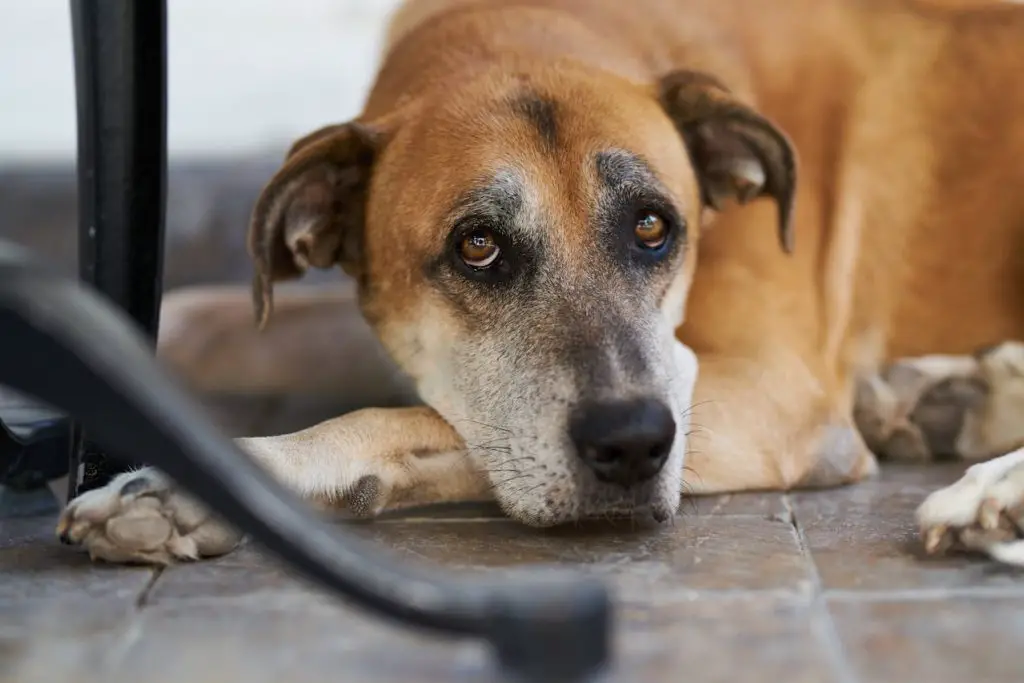
Neglecting your dog’s eye hygiene and maintenance can lead to the accumulation of dirt, debris, and bacteria around their eyes, considerably increasing the risk of eye boogers, irritation, and infection.
As a responsible dog owner, it’s essential to prioritize eye cleaning and maintenance as part of your dog grooming routine.
Regular eye cleaning can help prevent eye boogers and infections. Here are three key reasons why:
- Removes dirt and debris: Regular eye cleaning helps to remove dirt, dust, and other debris that can accumulate around your dog’s eyes, reducing the risk of eye boogers and irritation.
- Prevents bacterial growth: Cleaning your dog’s eyes regularly can help prevent the growth of bacteria, which can cause infections and eye boogers.
- Promotes healthy tear production: Proper eye cleaning can help promote healthy tear production, which is essential for maintaining clear vision and preventing eye boogers.
Frequent Questions
You shouldn’t use human eye drops on your dog’s eye boogers without consulting a vet, as they may contain ingredients toxic to dogs. Instead, explore alternative eye care solutions specifically designed for canine eyes to guarantee safety and efficacy.
You should clean your dog’s eyes daily to prevent eye boogers, using gentle eye cleaning techniques and cotton balls. Regular eye exams and incorporating prevention tips, such as trimming facial hair, can also help reduce tear staining and eye discharge.
You’re not alone in wondering: can dog eye boogers spread to you or your other pets? The good news is, usually not; however, prioritizing your dog’s eye health and overall pet hygiene greatly minimizes the risk of transmission.
You can remove your dog’s eye boogers with a cotton swab, but use caution. Gentle, safe cleaning is key. Soak the swab in warm water, then carefully wipe away boogers, avoiding direct contact with the eye itself.
You’re examining the relationship between eye boogers and nutritional impact in dogs. While eye boogers don’t directly indicate a nutritional deficiency, certain deficiency symptoms, such as a dull coat or skin issues, can be linked to inadequate nutrition.
Final Thoughts

You’ve likely lost count of how many times you’ve wiped away your dog’s eye boogers – a million, maybe?
Don’t worry, it’s a normal part of dog ownership.
By understanding the underlying causes, from normal tear production to allergies and poor eye hygiene, you can take steps to minimize the gunk and keep your dog’s peepers healthy.
Regular cleaning and monitoring are key to preventing eye issues and ensuring your furry friend’s vision stays sharp.
